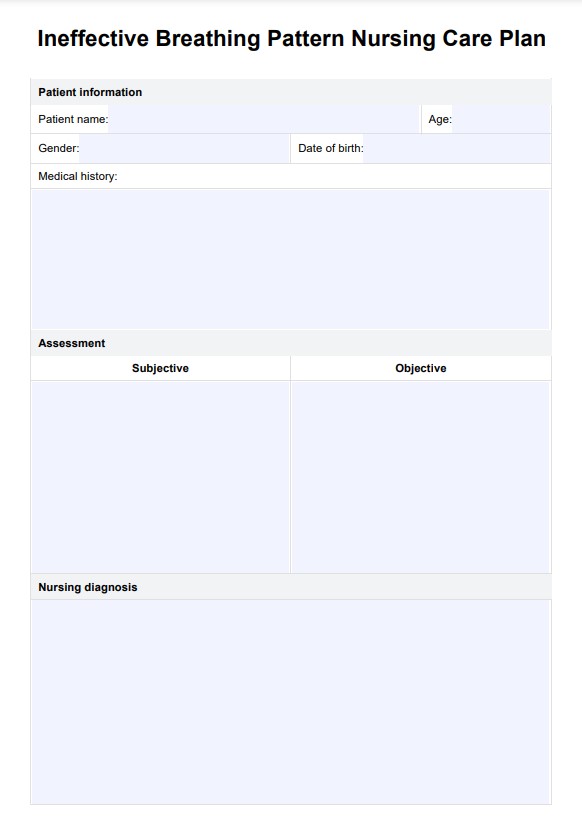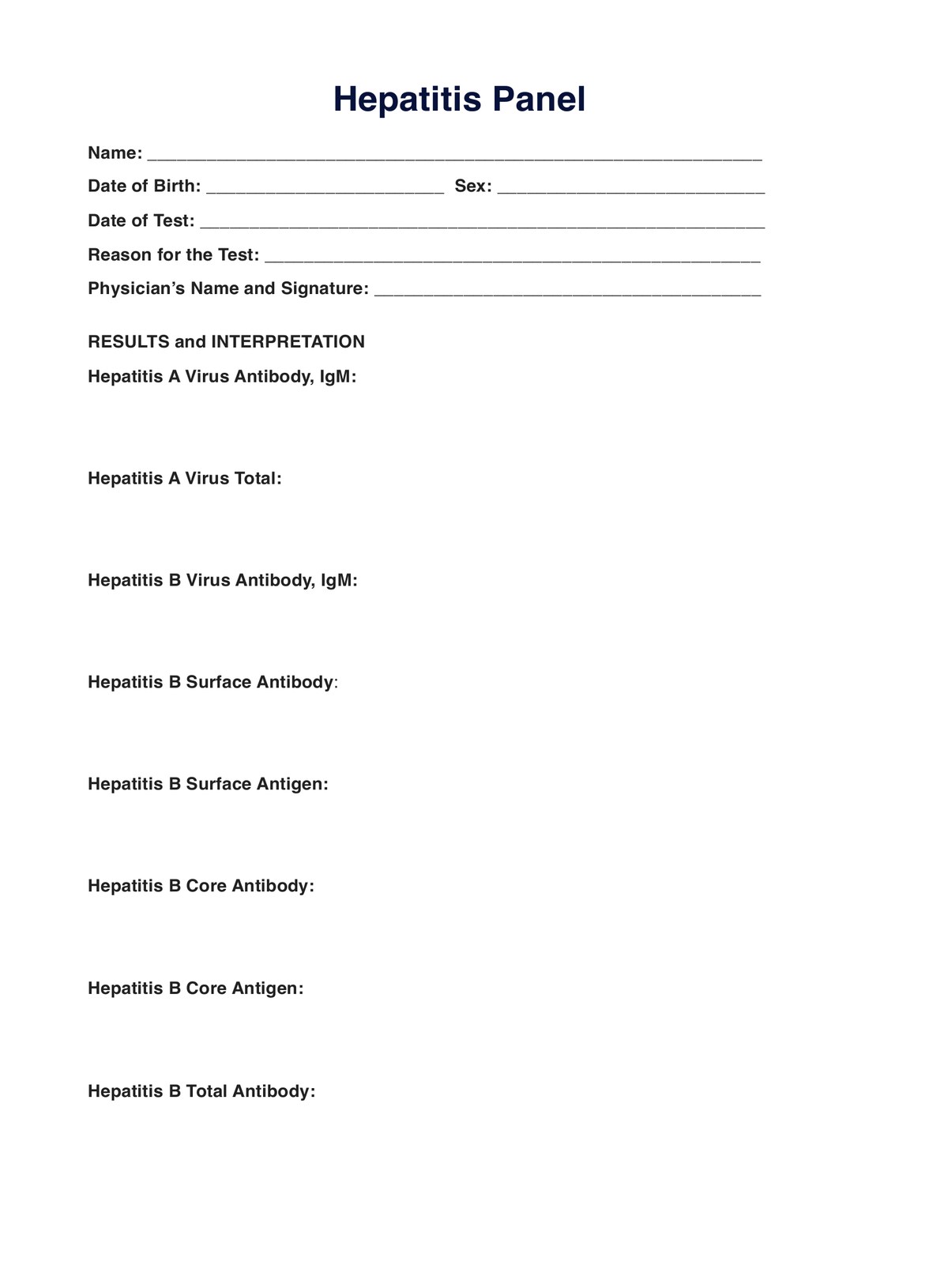Dehydration Skin Test
Assess if your patient is dehydrated by conducting the skin-pinch test and using our Dehydration Skin Test template.


Methods to assess dehydration
Assessing dehydration involves simple yet effective methods to gauge the body's water levels. One commonly used approach is the Dehydration Skin Test, also known as the skin pinch test or the skin turgor test, where a gentle pinch on the skin, often the arm or abdomen, helps evaluate how quickly the skin returns to its normal state. Slow rebound or reduced skin turgor may suggest dehydration.
Another approach is observation through physical examination and evaluation of urine. For the physical examination, if the healthcare provider sees rough, itchy patches, a dull complexion, and reduced elasticity in the patient's skin, the patient may be dehydrated. As for urine observation, the healthcare provider may ask questions regarding the patient's urine color and frequency. Dark and infrequent urine may signal dehydration.
Furthermore, the healthcare provider may observe or ask the patient for other symptoms such as increased thirst, dry lips, fatigue, sunken eyes, dry mouth, high fever, irritability, dark circles, low blood volume, dizziness, weakness, low blood pressure, and infrequent urination. Identifying these symptoms is crucial for timely intervention and hydration to restore skin health and well-being.
It's important to note that these methods can vary in accuracy, and a combination of approaches often provides a more comprehensive evaluation of dehydration, allowing for timely interventions like increased fluid intake or medical assistance when necessary. Furthermore, for more precise measurements, a nutrition and wellness expert may use laboratory tests to analyze blood and urine samples, assessing electrolyte levels and kidney function.
Dehydration Skin Test Template
Dehydration Skin Test Example
What is the Dehydration Skin Test?
The Dehydration Skin Test, better known as the skin pinch test or skin turgor test is a straightforward method for assessing hydration levels by evaluating skin turgor, which measures the skin's elasticity. It involves gently pinching a small section of skin, commonly on the back of the hand or forearm. Subsequently, releasing the pinched skin and observing how quickly it returns to its normal position. Well-hydrated skin typically snaps back promptly, indicating good elasticity.
In contrast, delayed recoil may suggest dehydration. This test is based on the premise that dehydration reduces the skin's ability to bounce back quickly. While the skin pinch method test is easy to perform at home, it's essential to recognize its limitations, as factors like age and skin elasticity can impact results.
How to conduct the skin pinch test for dehydration?
The skin turgor test or three-second pinch test is an easy way to gauge your hydration levels by quickly assessing the skin's elasticity. After you obtain a copy of our Dehydration Skin Test template in this guide, follow the step-by-step instructions provided in the template or below to conduct the Dehydration Skin Test:
Step 1: Choose a location
Select a suitable area with ample skin for a comfortable pinch, such as the abdomen, the fleshy part between your thumb and wrist, or just below the collarbone.
Step 2: Pinch the skin
Using your thumb and index finger, firmly pinch a small section of your patient's skin for three seconds.
Step 3: Release and observe
Let go of the pinched skin and observe how quickly it returns to its original position.
Step 4: Record and interpret the results
Take our template and record your observations. If the patient's skin bounces back immediately, they are likely well-hydrated. Returning to normal may indicate mild dehydration, prompting increased fluid intake if it takes a while. However, if the skin remains dented for several seconds, it signals moderate to severe dehydration, necessitating consultation with a healthcare professional for proper guidance and assessment.
Benefits of using the Dehydration Skin Test template
Here are the benefits of utilizing the Dehydration Skin Test template:
- Efficient tracking: The template simplifies the recording of dehydration test results, streamlining the tracking process for healthcare professionals. Easy-to-use checkboxes and fields enhance efficiency, allowing quick and accurate documentation of skin dehydration test outcomes.
- Consistent monitoring: Facilitates consistent and standardized monitoring of hydration status over time. Healthcare professionals can easily compare results across multiple sessions, identifying trends or changes in hydration levels.
- Enhanced communication: Visually representing dehydration indicators simplifies communication between healthcare professionals and patients. Clear documentation allows for practical discussions about hydration management and encourages patient engagement.
Commonly asked questions
It works. However, factors like age, skin elasticity, and overall health can impact the accuracy of the results. For instance, an older person's skin naturally loses some elasticity, making the pinch test less precise. A wellness expert often uses the pinch test as a part of a broader assessment, considering other signs and symptoms of dehydration.
Testing for dehydration can be done through a pinch test, where you pinch the skin, and if it takes more than a few seconds to return to normal, dehydration may be present.
Dehydrated skin or poor skin turgor is recognized by its rough and dry texture, often accompanied by flaky patches, reduced elasticity, prominent wrinkles, fine lines, and a lack of natural glow. The condition can be reversed by drinking water or eating foods with high water content, such as cucumbers and watermelon.
Dehydration affects the skin by pulling water from it for essential bodily functions, resulting in dryness, scaling, and a weakened skin barrier, making it more susceptible to damage.














































































































